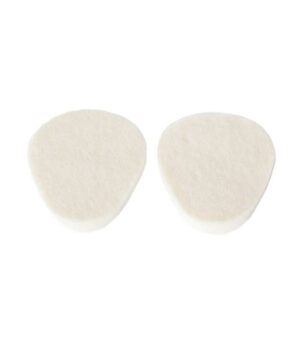The following excerpts are from Dr. McClanahan’s article on bunions and hammertoes.
Bunions are a sometimes painful dislocation of the 1st metatarsophalangeal joint or 5th metatarsophalangeal joint that occurs primarily in shod or shoe-wearing populations. There have been many suggested causes of bunions, but the one cause that has been shown to be consistently reversible is the tapering toeboxes on most conventional footwear available to shoe wearing people. Tapering toeboxes have a long history of standard inclusion in most shoe models, including most athletic models. The unfortunate side effect of the tapered forefoot shape of our footwear is that it holds our toe bones and joints in an unnatural proximity to one another, forcing the great toe into the space that should be occupied by the second toe, to create the classical bunion deformity. The tailors bunion, on the outside of the foot, is created when the fifth toe is forced in under the fourth toe, and the head of the fifth metatarsal is forced into the outer aspect of the shoe, sometimes causing pain, swelling or bursa formation.
Hammertoes are another forefoot deformity that can take a walker out of their activity. Hammertoes generally represent a tendon imbalance in the toes caused by one of the toe tendons getting an advantage over another toe tendon. Most commonly, it is one or all of the long extensor tendons on the top of the foot that gets an advantage over one or all of the flexor tendons on the bottom of the foot, to cause the first joint in the toe to be elevated above the ground. Most shoe wearing people chronically alter the delicate balance that co-exists amongst the toe tendons whether they know it or not.
This occurs because most footwear has heel elevation and a feature called toespring, which holds the ends of the toes above the ground, in relation to the ball of the foot. These two features, coupled with the tapering toeboxes mentioned above, are responsible for the development of most hammertoe and bunion deformities. Hammertoes generally cause walkers to experience pain and dysfunction in three distinct areas: 1) One the top of the contracted joint, known as the proximal interphalangeal joint, due to callus buildup or bursa formation that occurs from the toe joint now rubbing against the top of the toebox of the shoe; 2) One the tip of the toe, since now there is an unnatural bend in the toe, which causes pressure on the end of the toe. This is a problem because the skin on the end of the toe is not as strong and resilient as the skin on the bottom of the toe; 3) Under the ball of the foot. When a toe becomes hammered, also termed contracted, it unfortunately puts downward pressure on the metatarsal bone, causing pain, swelling, and sometimes callus formation.
If you wish to prevent or cure a bunion or hammertoe deformity naturally, you must be willing to view your footwear as health equipment, rather than as fashion statements. Even our walking and running shoes have tapering toeboxes, heel elevation and toespring, which encourage bunion and hammertoe formation, yet the market shows us that fashion and style rule most people’s agenda when it comes to buying footwear.
Interested in learning more? Click here to read the article in its entirety.

















